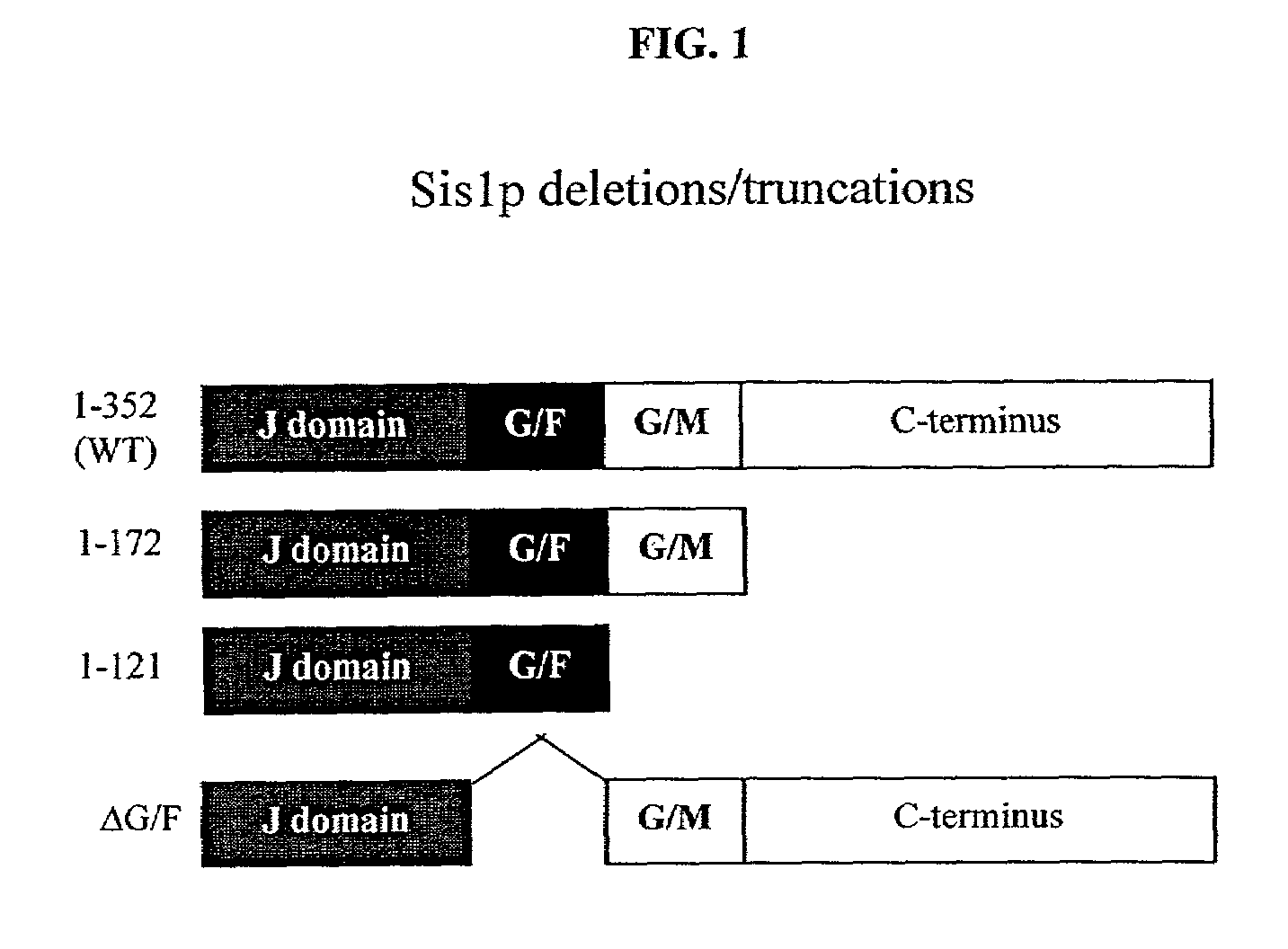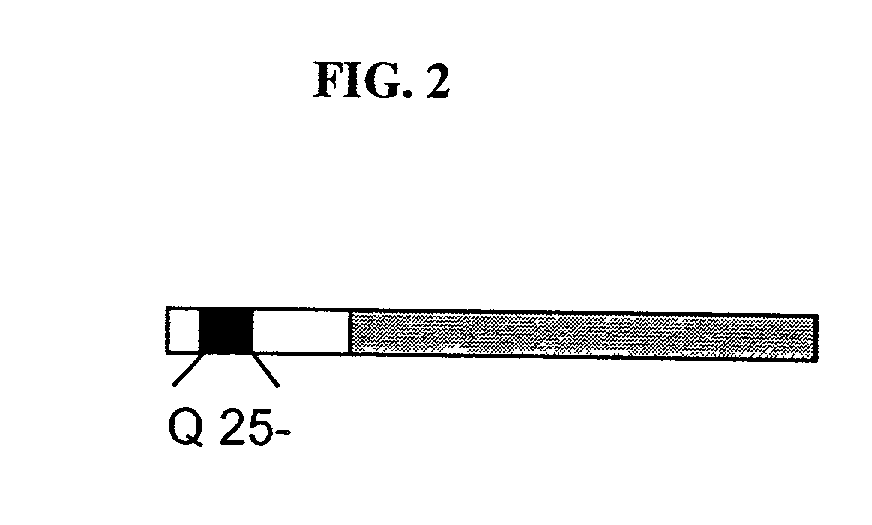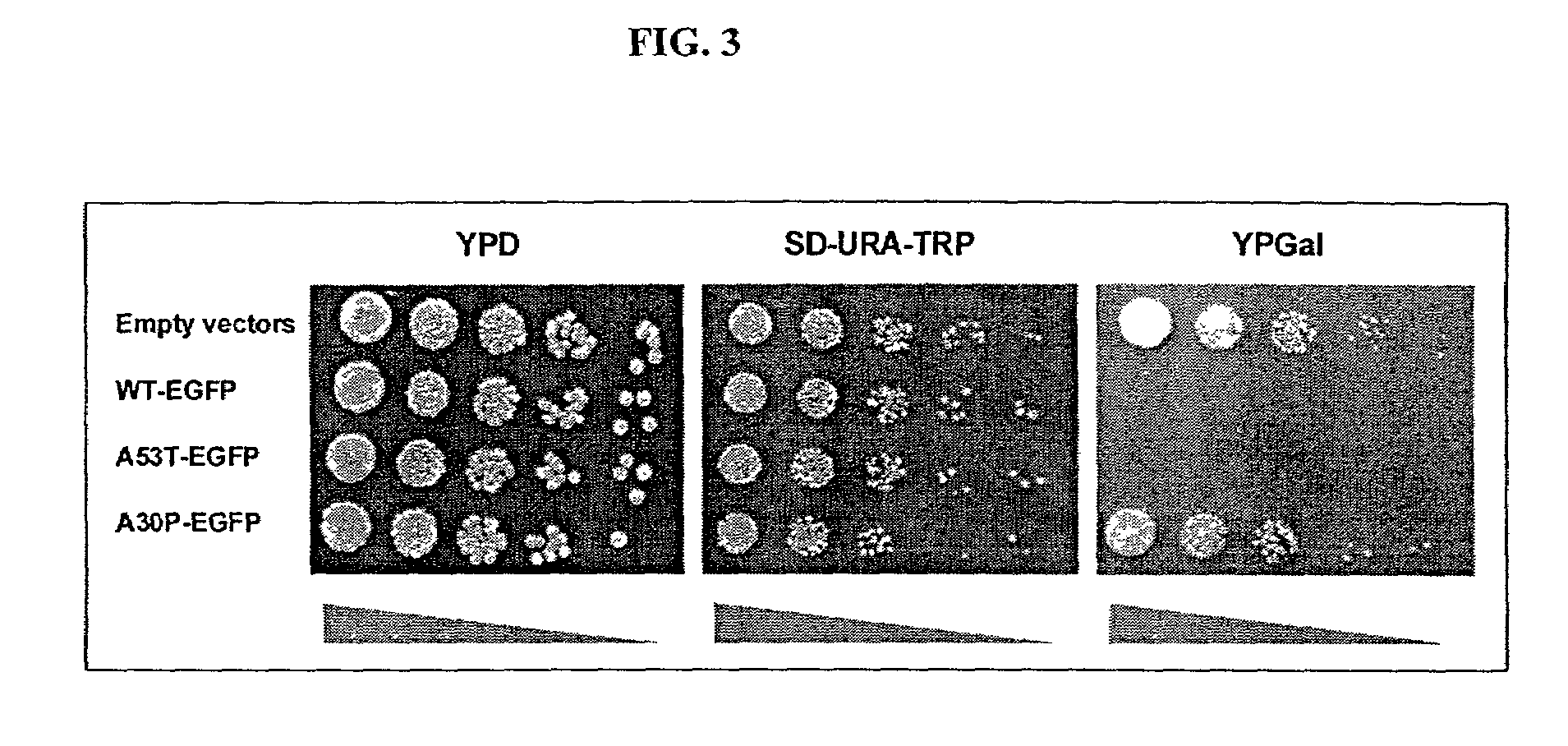Yeast screens for treatment of human disease
- Summary
- Abstract
- Description
- Claims
- Application Information
AI Technical Summary
Benefits of technology
Problems solved by technology
Method used
Image
Examples
example 1
Materials and Methods for Ht Expression in Yeast
[0181]Plasmid Construction
[0182]Plasmids encoding fusions between GFP and the N-terminal region of Ht were the kind gift of the Hereditary Disease Foundation. To create yeast expression plasmids for HtQ25 or HtQ103 DNAs were digested with Xho I and Xba I, and the resulting Xho I / Xba I fragments were ligated into the vector pYES (Invitrogen) to obtain plasmids pYES / PQ25 or pYES / PQ103, respectively. These DNAs were digested with Sal I and ends were filled with Klenow enzyme. Afterwards DNAs were digested with EcoR I and the resulting fragments were subcloned into a high copy (2μ) expression vector p426 for constitutive expression or p426GAL for galactose induction, respectively (Mumberg et al., 1994; Mumberg et al., 1995).
[0183]To create low copy (CEN) expression plasmids with either constitutive (GPD) or galactose (GAL) inducible promotor DNAs, p426 / PQ25 or p426 / PQ103 were digested with Xho I. The resulting Xho I fragments were subclone...
example 2
Coalescence of Mutant Ht in Yeast
[0197]To investigate Ht in yeast, the N-terminal region (amino acids 1–68 of the wild-type protein) with a wild-type polyQ (polyglutamine) repeat length of 25 residues or with mutant repeat lengths of 47, 72 or 103 residues was fused to GFP. Each was placed under the control of GPD, a strong constitutive yeast promoter, on a single copy plasmid (FIG. 1). Homopolymeric tracts of CAG, the naturally occurring glutamine codon in Ht, are inherently unstable, and particularly so in yeast (Moore et al., 1999; Schweitzer et al., 1997). This problem was reduced by the fact that glutamine is encoded by both CAG and CAA and that mixed codon repeats are considerably more stable (Kazantsev et al., 1999). To minimize instability problems, all experiments reported herein were performed with mixed codon polyQ repeats and all work was performed with fresh transformants, using at least two independent colonies in each case, and repeated at least two times.
[0198]Fluore...
example 3
Newly Induced Mutant Ht Aggregates in All Cells
[0199]Cells expressing different Q repeat variants exhibited the same frequency of plasmid loss (determined by plating cells to non-selective and selective media) and grew at similar rates, with only a slight deficit in cells expressing HtQ103. Final densities were typically 0.7–0.8 for cells expressing HtQ25, HtQ47 or HtQ72 and 0.5–0.7 for cells expressing HtQ103. Thus, the long polyQ Ht fragments were not overtly toxic in yeast. However, because the proteins were expressed from a constitutive promoter, it was possible that a subset of cells competent to grow in the presence of polyQ proteins had been selected during transformation. If so, selection might also have influenced the aggregation state of the proteins. To determine if the coalescence of expanded glutamine reflected an inherent property of the protein or was the result of a selective process, the Ht-GFP constructs were transferred to the control of a galactose-inducible prom...
PUM
| Property | Measurement | Unit |
|---|---|---|
| Temperature | aaaaa | aaaaa |
| Temperature | aaaaa | aaaaa |
| Temperature | aaaaa | aaaaa |
Abstract
Description
Claims
Application Information
 Login to View More
Login to View More - R&D
- Intellectual Property
- Life Sciences
- Materials
- Tech Scout
- Unparalleled Data Quality
- Higher Quality Content
- 60% Fewer Hallucinations
Browse by: Latest US Patents, China's latest patents, Technical Efficacy Thesaurus, Application Domain, Technology Topic, Popular Technical Reports.
© 2025 PatSnap. All rights reserved.Legal|Privacy policy|Modern Slavery Act Transparency Statement|Sitemap|About US| Contact US: help@patsnap.com



